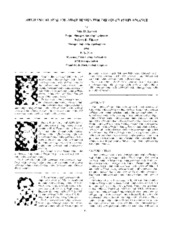| dc.contributor.other | International Pump Users Symposium (9th : 1992) | |
| dc.creator | Barnes, N. D. | |
| dc.creator | Flitney, R. K. | |
| dc.creator | Nau, B. S. | |
| dc.date.accessioned | 2017-10-05T17:15:04Z | |
| dc.date.available | 2017-10-05T17:15:04Z | |
| dc.date.issued | 1992 | |
| dc.identifier.uri | https://hdl.handle.net/1969.1/164232 | |
| dc.description | Lecture | en |
| dc.description | pg. 61 | en |
| dc.description.abstract | The influence of pump chamber design to the environment, and mechanical seal reliability has been the been the subject of a major collaborative United Kingdom study. The key mechanisms involved in controlling the flow regimes around the seal are highlighted. Current practice is reviewed and shows that many seals are operated in chambers not well suited to their functional requirements; heat transfer, vapor and solids control. The experimental techniques are described, including flow visualization and measurements of heat transfer from the seal to its surroundings by hot film anemometry. The work highlights that a highly constrained cylindrical seal chamber, commonly used in practice, provides a poor seal environment. A seal chamber with controlled flow structure, and in particular a flared cavity, gives significantly better performance. | en |
| dc.format.medium | Electronic | en |
| dc.format.mimetype | application/pdf | |
| dc.language.iso | en | |
| dc.publisher | Turbomachinery Laboratories, Department of Mechanical Engineering, Texas A&M University | |
| dc.relation.ispartof | Proceedings of the 9th International Pump Users Symposium | en |
| dc.subject.lcsh | Pumping machinery | en |
| dc.title | Mechanical Seal Chamber Design For Improved Performance | en |
| dc.type.genre | Presentation | en |
| dc.type.material | Text | en |
| dc.identifier.doi | https://doi.org/10.21423/R13D6M | |


